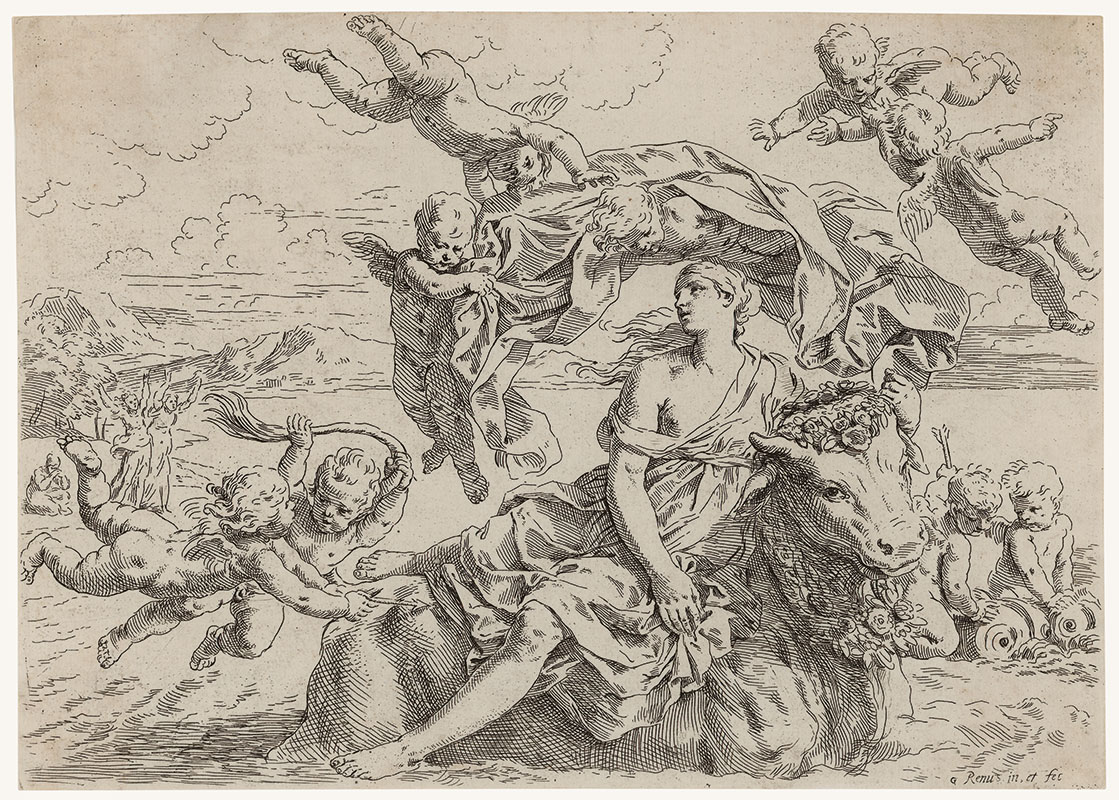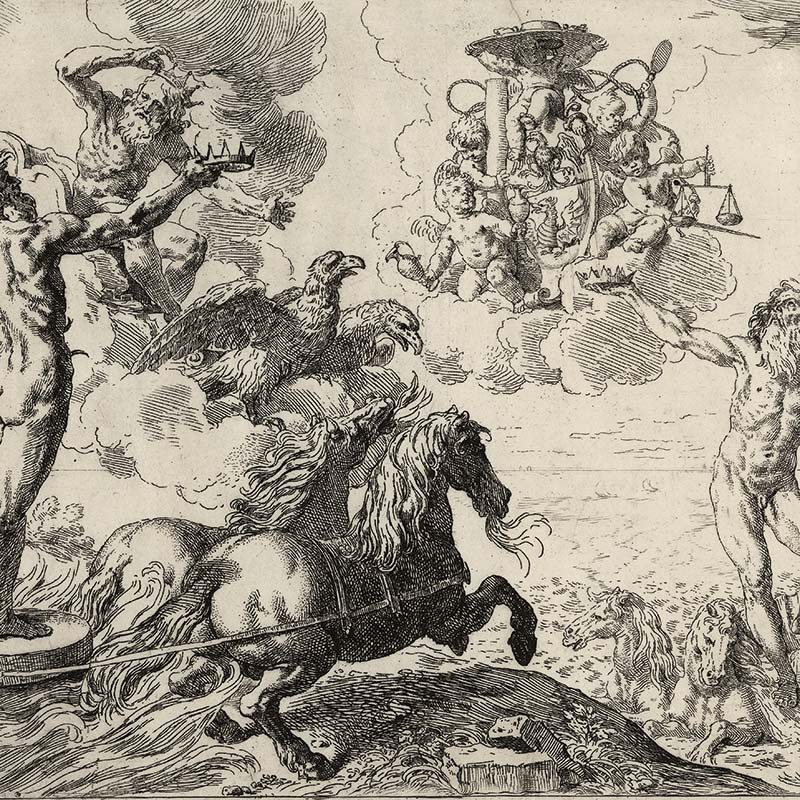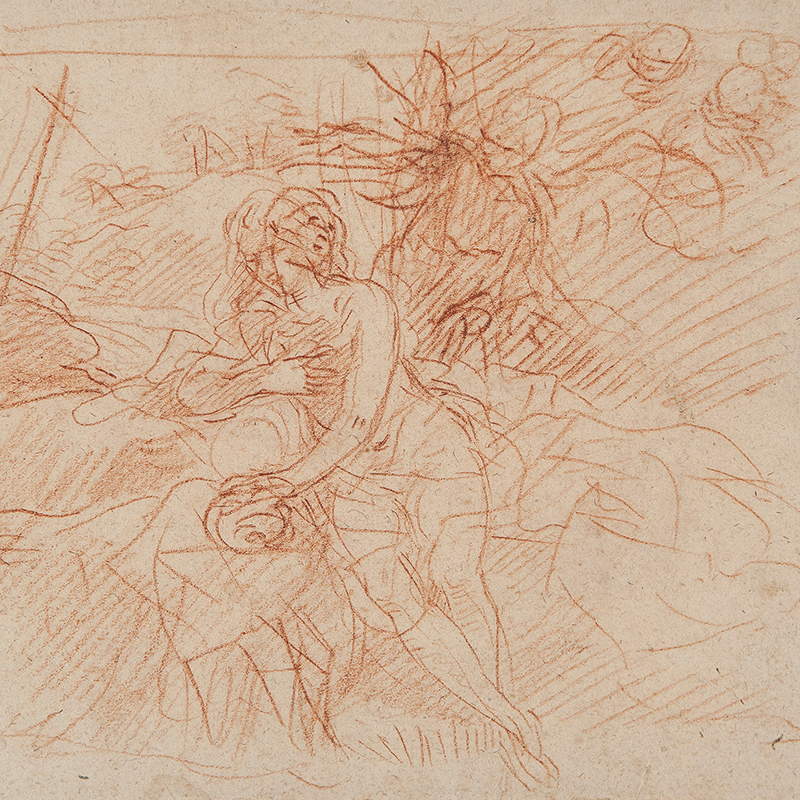Simone Cantarini
Pesaro 1612 - Verona 1648
225x315 mm
Bartsch, 1870, XIX, p. 141, no. 30 II/II; Bertelà-Ferrara 1973, no. 124; M. S. Sopher 1978, p.48, no. 71; Bellini, 1980, pag. 54 no. 6 II/II.
Provenance
Colnaghi, London on the verso, in pencil: C 35193.
Very good impression of the second state with the Reni signature.
A well inked impression, printed during Cantarini’s lifetime, pulled with plate-tone on paper with watermark Flower (?) in single circle, Second state of two with the inscription at the bottom right G Renus. in. et fec. In fine condition.
According to Bellini the etching should be dated 1636, when Cantarini still worked with his master Guido Reni. Sopher suggest that the etching derives not from the painting by Reni in the Denis Mahon’s collection but rather from the painting of the same subject by Titian, wich is now in Boston at the Isabella Steward Gardner Museum. Sopher considering the stylistic character of the etching, pospone the dating to 1630-40, when Cantarini was in Rome.
References
Marcus: Sopher, Seventeenth Century Italian Prints, Stanford, California 1978 ; Paolo Bellini, L’opera incisa di Simone Cantarini, Milan 1980.
Information on the master
Simone Cantarini was strongly influenced by Guido Reni in both painting and etching. Cantarini, even as a boy showed a predilection for drawing. At about the age of eleven he was apprenticed to a local artist. Sometime later the young artist went to Venice briefly. In about 1635, Cantarini entered Reni`s studio. It was here that he first began to show great promise as an etcher, working closely with Reni. This led to friction: Cantarini was loath to have his work passed off as the master`s and also rebelled against Reni`s attempt to use him to reproduce Reni`s painting in etching. After a violent break with Reni inabout 1637, Cantarini experienced hard times financially, travelling from Pesaro to Rome to Bologna, for a while earning his living chiefly by selling his etchings. In 1647 he worked, briefly and unhappily, for the Duke of Mantua in that city. He suddenly became ill there and left because of his health, reaching Verona, where he died in 1648.
Other works of the master


